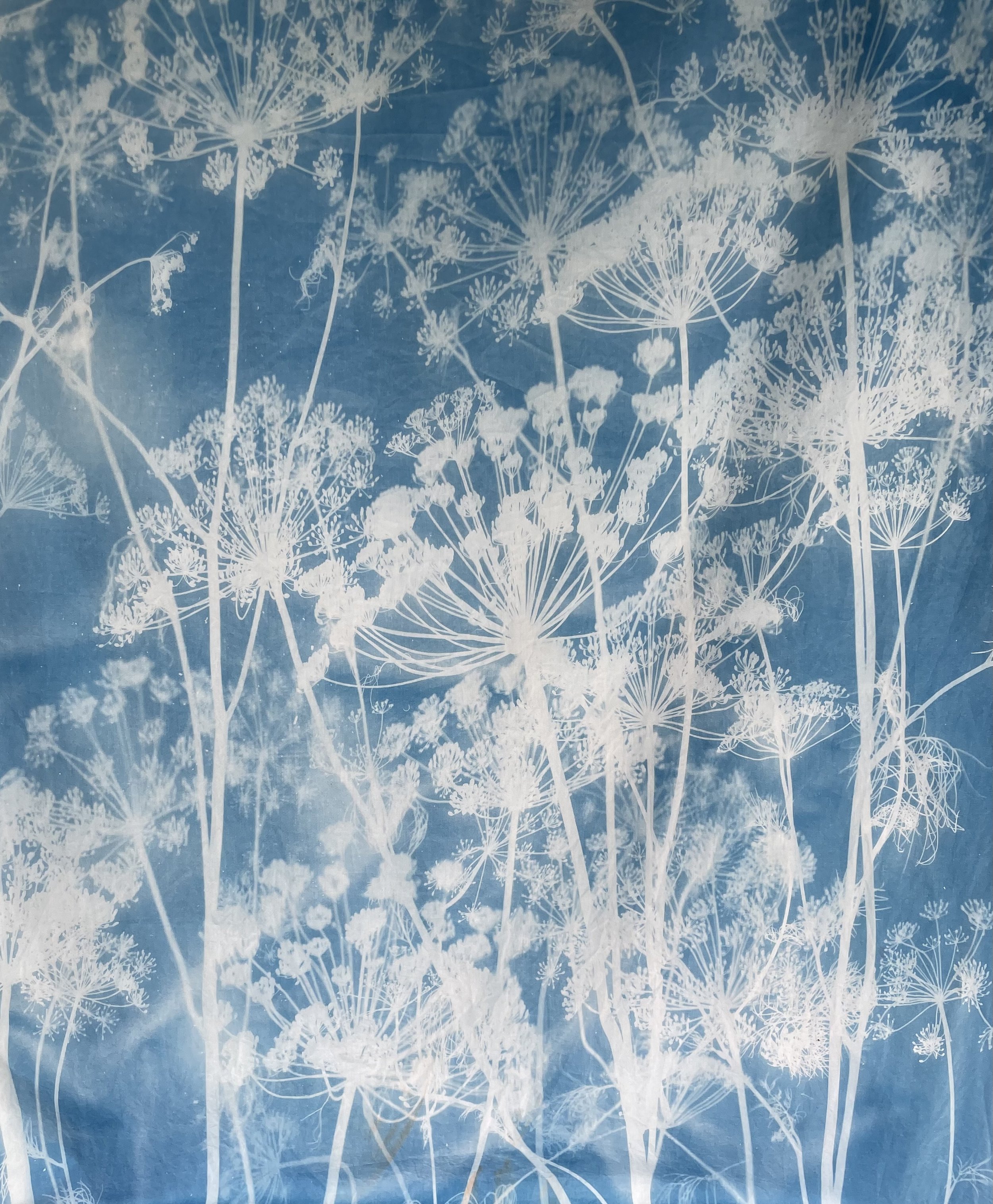Into the blue
You’ve probably heard of blueprints in terms of architectural plans and these were actually cyanotypes, an early form of photography that can be used today in lots of creative ways.
It’s an easy, exciting way to produce beautiful prints. I mostly use plants from the garden and from foraging expeditions (picked up on a dog walk usually!) and print onto fine cotton, but originally paper would have been used and any natural material can be used as a substrate. I’ve seen it being used on wood and even ceramics.
To make them, you combine two iron solutions - potassium ferricyanide and ferric ammonium citrate. I know they sound a bit sinister but they are safe to handle with precuations, similar to using bleach.
You have to mix the chemicals away from bright light as it is the UV in sunlight that causes a reaction to take place and create the change in colour. You can also use a UV lamp which is useful on a rainy day, or if you want to have more control over the process. You then apply them to your chosen surface.
When the surface is dry, you can place objects or plant materials and expose it to the sun. Sometimes I use a sheet of glass from an old picture to weigh the items down although if there is a bit of movement from a breeze, you can get rather lovely hazy effects.
If you want to make a really detailed design you can print from your computer onto a transparent sheet and place this on top.
The exposed part of the surface quickly starts turning blue and the longer you leave it, the darker the shade of blue. On a bright summer’s day this can happen really quickly - almost in seconds rather than minutes. Even if it’s cloudy but bright, I’ve found it still works.
You then simply rinse out the excess and, once dry, you have a beautiful silhouette.
There are other processes you can then do to the print to modify the colour. If you soak the fabric in a liquid detergent the blue will fade to different shades of blue (quite quickly so keep watch!) and eventually it changes to a greeny yellow and finally to pale yellow. Because there is still iron present, this will act as a mordant (fixitave) so you can then overdye and get different colours. I have done this with teabags - the tannin is brown, and onion skins which produce subtle taupes.
The examples below show the yellowy green without any modification, a true yellow, with the addition of tea dye and a detail of a piece that was dyed with onion skins and then stitched into.
What do you do with your finished result? I have made cards, cushions and wall pieces. Below is a detail of a piece in a series of moths and butterflies and for this I used a design I made in Photoshop which was printed onto transparent film and place on top of fabric before being exposed to the sun.
I have made a video on YouTube with a demonstration of how I prepare and apply the cyanotype chemicals and the process of making the print.










